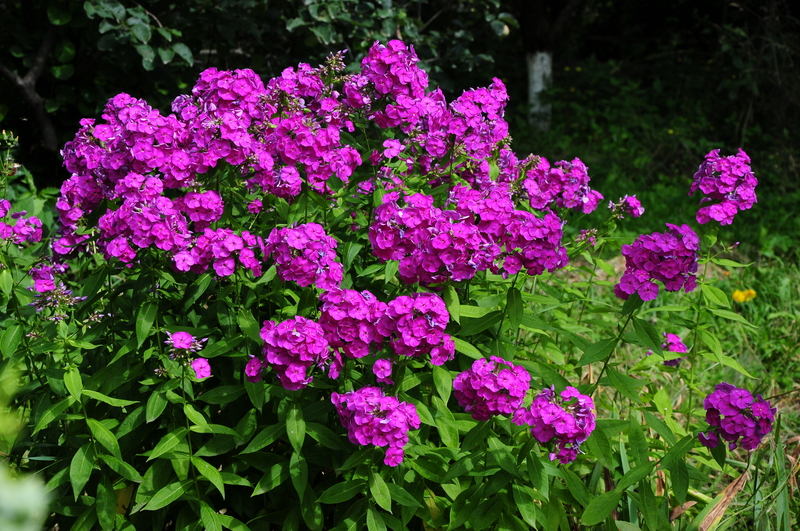Vertical Gardening: A Modern Approach
Posted on 10/09/2025
Vertical Gardening: A Modern Approach
Vertical gardening is revolutionizing how we think about growing plants and flowers, especially in urban environments where space is limited. With its distinct blend of aesthetics and function, this practice has surged in popularity among homeowners, apartment dwellers, business owners, and even schools. This comprehensive guide explores everything you need to know about vertical gardens -- from beginner basics to advanced tips for maximizing your space and enhancing both indoor and outdoor areas.

What Is Vertical Gardening?
At its core, vertical gardening is the technique of cultivating plants upward, utilizing vertical space rather than traditional horizontal garden beds. By growing plants on walls, trellises, fences, or specially designed structures, gardening enthusiasts can enjoy a lush and vibrant workspace, regardless of space constraints.
Key Characteristics of Vertical Gardens
- Space Efficiency: Ideal for apartments, balconies, and urban dwellings with limited ground area.
- Adaptability: Suitable for both indoor and outdoor settings.
- Design Versatility: Supports a wide variety of plant types -- from ornamental flowers to herbs, vegetables, and succulents.
- Ease of Maintenance: Many systems offer self-watering options or streamlined care routines.
Why Choose a Modern Vertical Garden?
The modern vertical garden seamlessly integrates technology, sustainability, and elegant design. Below, we explore the key reasons why more people are embracing vertical gardening in contemporary life.
Maximizing Small Spaces
- Vertical gardening allows city dwellers to create lush, productive gardens without a backyard.
- Even tiny balconies or bare apartment walls can be transformed into thriving, green oases.
- Innovative vertical planters and living wall systems make gardening accessible anywhere, even indoors.
Promoting Sustainability and Green Living
- Reduces Urban Heat: Green walls can lower surrounding air temperatures, contributing to urban cooling.
- Improves Air Quality: Plants help filter pollutants, increasing oxygen and improving indoor air.
- Reduces Carbon Footprint: Grow your own herbs and vegetables, decreasing dependency on store-bought produce.
Aesthetic Enhancements and Psychological Benefits
- Visual Appeal: A well-designed living wall serves as a stunning focal point indoors or outdoors.
- Mental Well-being: Studies show that exposure to greenery can reduce stress and elevate mood.
- Privacy and Noise Reduction: Vertical gardens can work as natural sound barriers and offer increased privacy.
Different Approaches to Vertical Gardening
There are numerous techniques and structures available for vertical gardening. Your choice depends on factors such as location, plant type, and intended use.
Types of Vertical Garden Systems
- Wall-mounted Living Walls: These are planters or modular systems attached directly to indoor or outdoor walls, ideal for decorative displays.
- Trellises and Lattice: Classic supports for climbers (like beans, peas, roses, ivy) that let plants scale vertically.
- Tower Planters: Freestanding planters stacked to grow multiple plants in a compact vertical arrangement -- great for herbs and leafy greens.
- Pocket Planters: Fabric or plastic pouches hung on walls or fences, perfect for smaller edibles and flowers.
- Pallet Gardens: Repurposed shipping pallets filled with soil and plants, a favorite among DIY enthusiasts.
Modern Technology in Vertical Gardening
- Automatic Irrigation: Self-watering vertical gardens utilize drip irrigation systems to maintain consistent moisture.
- Hydroponic Vertical Gardens: These soil-free setups use nutrient-rich water, ideal for indoor gardening and maximizing harvests.
- Smart Gardens: Integrated sensors and smartphone apps monitor plant health and automate watering and lighting.
Step-by-Step Guide: How to Start a Vertical Garden
1. Assess Your Space
- Determine the amount of available light -- full sun, partial shade, or low-light conditions.
- Choose whether your vertical garden wall will be indoors or outdoors, and measure the area for your installation.
2. Select a Vertical Garden System
- DIY or Prefab: Decide between building your own setup (such as using a pallet or trellis) or purchasing a commercial kit.
- Consider factors like water access, drainage, and weight.
3. Choose the Right Plants
- Pick varieties that suit your light levels and vertical structure. Leafy greens, herbs, succulents, and climbing vines are popular picks for living walls.
- If planting edibles, ensure you stagger crops for continual harvests.
- For indoor walls, look for low-maintenance, shade-tolerant species like pothos, spider plants, or peace lilies.
4. Prepare the Structure and Soil
- Install supports, brackets, or containers securely.
- Use lightweight, moisture-retentive potting mix. Some products are formulated specifically for vertical planters.
5. Plant and Maintain
- Plant densely but allow for adequate airflow between plants.
- Water regularly, taking care to prevent overwatering and root rot. Consider incorporating a drip irrigation system.
- Feed plants with a balanced, slow-release fertilizer every few weeks for optimal growth.
- Trim and prune regularly to maintain shape and health.
Best Plants for Vertical Gardening
Choosing the right species is key to success in a modern vertical garden. The best plants for vertical gardening are often those that are compact, have shallow roots, or are natural climbers.
Top Choices for Outdoor Vertical Gardens
- Climbing Vines: Ivy, clematis, jasmine, morning glory
- Flowering Annuals: Petunias, nasturtiums, begonias, lobelia
- Succulents: Sedum, echeveria, stonecrop varieties thrive in sunny vertical gardens
- Herbs & Vegetables: Lettuce, spinach, basil, parsley, strawberries, cherry tomatoes, pole beans, peas
Best Plants for Indoor Living Walls
- Shade Loving & Air-Purifying Plants: Pothos, philodendron, ferns, spider plants, peace lily, English ivy
- Compact Herbs: Mint, oregano, chives, thyme
- Dwarf or Miniature Varieties: Miniature orchids, small-leafed peperomia
Maintenance and Troubleshooting for Vertical Gardens
Like any gardening approach, vertical gardening comes with its set of maintenance tasks and potential challenges. Here's how to keep your vertical garden lush and healthy.
Watering
- Monitor moisture levels closely--vertical planters can dry out more quickly than ground beds, especially at the top.
- Self-watering or drip systems simplify care and prevent both under and over-watering.
Fertilizing
- Plants in restricted soil rely on you for nutrients. Use a balanced, slow-release fertilizer tailored to your plant types every 4-6 weeks.
Pest Control
- Watch for signs of pests like aphids, spider mites, and whiteflies. Treat infestations promptly with natural or chemical remedies.
- Healthy plants and clean systems reduce pest risks.
Structural Care
- Check supports and fastenings regularly, especially for larger or outdoor installations.
- Clean containers and remove dead leaves to prevent mold, mildew, and rot.
Inspiring Examples of Vertical Gardening
- Urban Offices: Many workplaces are installing living green walls to boost air quality and employee well-being.
- Small Apartment Balconies: A simple trellis or pocket planter system can supply herbs for cooking and brighten tight quarters.
- Schools and Community Gardens: Vertical planters teach kids about sustainability and maximize educational green space.
- Restaurants: Chef's gardens supply fresh produce in limited city real estate.
Sustainability and Environmental Impact
Embracing vertical gardening empowers individuals and communities to adopt greener lifestyles, even in the heart of a city. Here's how vertical gardens can drive sustainability:
- Reduces Land Footprint: Growing vertically produces more per square foot than horizontal beds.
- Improves Biodiversity: Living walls attract pollinators and can be customized to host native plant species.
- Insulation: Green walls can help insulate buildings, leading to energy savings.
- Stormwater Management: Plants and soil absorb rainfall, lessening runoff and urban flooding.
Cost Considerations for Vertical Gardens
The cost of creating a vertical garden at home can range from very affordable DIY systems to professionally installed living walls costing thousands. Factors influencing price include:
- Type of System: DIY recycled pallet planters are inexpensive, while self-watering wall units are pricier.
- Plant Choices: Mature ornamentals or rare species cost more than common herbs or starter plants.
- Maintenance: Automated watering and lighting reduce manual labor but increase upfront cost.
*Tip: Many gardening supply stores carry starter kits that are perfect for beginners, balancing convenience and affordability.*

Frequently Asked Questions About Vertical Gardening
Is vertical gardening suitable for beginners?
Absolutely! Many vertical gardening systems are designed for ease of use and can be scaled up as your skills grow.
How much sunlight do I need?
The required sunlight depends on your chosen plants. Most edibles and flowering plants prefer 6+ hours of direct light, but many foliage and indoor species thrive in partial or low light.
Can I grow vegetables vertically?
Yes! Leafy greens, peas, beans, tomatoes (with support), herbs, and strawberries are all excellent choices for indoor or outdoor vertical vegetable gardens.
Do vertical gardens attract pests or cause mold?
Proper watering and airflow usually prevent mold. Choose disease-resistant plants and monitor for pests. As with any garden, regular care is essential.
Conclusion: Embrace the Vertical Gardening Revolution
Whether you want to create a vertical garden on your balcony, build a lush living wall in your office, or simply grow your own food in a sustainable way, the modern approach to vertical gardening has the flexibility, beauty, and efficiency to suit everyone. By making the most of unused vertical space, we can all bring more greenery into our lives -- improving our environments and our well-being.
Start your vertical gardening journey today and discover just how rewarding gardening upwards can be!

